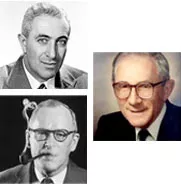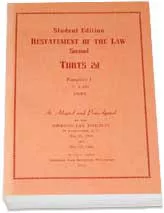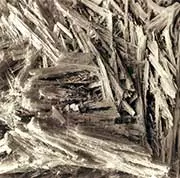After a mesothelioma diagnosis, it is natural for a person to focus only on their health. But if you or a loved one is diagnosed with an asbestos-related disease, you should consider contacting a mesothelioma lawyer immediately
Mesothelioma is an almost entirely preventable cancer. Many companies who produced, distributed or used asbestos products knew of its dangers and failed to warn their employees. Filing a lawsuit can help those diagnosed with mesothelioma get the compensation they deserve.
A qualified mesothelioma attorney can help you decide whether to pursue a lawsuit and guide you through the process. The right asbestos attorney can help you file your claim before the statute of limitations expires. They will evaluate your case so you can receive the maximum compensation.
Most mesothelioma lawsuits never go to trial because they are settled out of court before the trial takes place.
Primary Types of Mesothelioma Lawsuits
Personal Injury Claims
A person diagnosed with mesothelioma can file a personal injury lawsuit against a company responsible for exposing them to asbestos.
Wrongful Death Claims
If a mesothelioma patient files a lawsuit but passes away before it’s resolved, their loved ones may be able to step in as plaintiffs. Family members may have the option to file their own wrongful death claims. This can provide compensation to assist with medical bills, funeral expenses and loss of income.
Tim Povtak, Senior Writer for Asbestos.com, explains the benefits of seeking legal help for mesothelioma patients and their families.
Common Questions About Mesothelioma Lawsuits
How Long Does a Mesothelioma Lawsuit Take?
The legal process for an asbestos-related lawsuit depends on the health of the plaintiff. If you are in poor health, the entire process can be expedited. If there is no urgency, the process could take several months or longer. In either case, the defendant probably will try to drag out the process. Your attorney will work to resolve your case as quickly as possible. They will handle each step so you can focus on your health and spend time with your loved ones.
Will I Need to Travel?
The location where you file can affect the length of the case process. Your attorney will help you choose the best jurisdiction for your case. It may be necessary to file outside the state where you live. You typically will not need to travel. Mesothelioma attorneys can often handle the entire case process and travel to you when necessary.
How Much Do Mesothelioma Lawyers Charge?
Most mesothelioma lawyers work on a contingency fee basis. This means your attorney only gets paid if you agree to a settlement or win your lawsuit. When you settle or win a case, a percentage of the award will be paid to your lawyer. If not, you pay no attorney fees.
Choosing a Mesothelioma Attorney
The first step in a successful filing process is choosing an attorney. If you worked for a large corporation that closed or is bankrupt, funds were likely set aside to help pay medical and related expenses for mesothelioma patients.
A mesothelioma attorney is knowledgeable about these funds and will help you file a claim. In addition, a mesothelioma attorney is familiar with asbestos manufacturers and will determine who is responsible for your suffering.
When you talk to the asbestos attorney, be prepared to discuss past employment, health history and current health status. It is very important to hire a lawyer you feel comfortable talking to.
Need Legal Information About Mesothelioma?
Get your free legal mesothelioma guide and learn about your rights.
GET YOUR LEGAL GUIDEMesothelioma Lawsuit Process
While everyone’s case is different, there are certain steps that apply to nearly everyone who files an asbestos-related lawsuit. Your attorney will handle each of these steps and explain the process along the way.
For the most part, mesothelioma lawsuits follow these steps:
Preparation
Your attorney will gather information about your history of asbestos exposure to determine who is responsible for your condition and where to file your lawsuit. You may be eligible to file your lawsuit in more than one jurisdiction.Filing
Your lawyer must file a written complaint with a court to start the legal process. Your attorney will prepare and file this document. For your case to move forward, your complaint must follow different court rules on how the document is written and the details it provides about your claim. An experienced attorney will be familiar with these rules and use this knowledge to help present your claims to the court.Responses
Each defendant in your lawsuit will receive a copy of your complaint. They will have a certain amount of time — usually 30 days — to respond.Because many years have likely passed since your asbestos exposure, the responsible company could now be a different company or could be bankrupt. It may take some time to locate and provide the appropriate people with your complaint. Your attorney will oversee this process.Defendants rarely admit fault. They most likely will deny your claims and argue that your complaint is not valid or that someone or something else is responsible for your exposure to asbestos. They may even claim that your condition is not related to asbestos exposure. Don’t worry. This is normal. Your attorney will reply to each defendant’s responses.Discovery
Lawyers on both sides gather information about your allegations, asking the other side to answer written questions, produce documents and participate in depositions. Some of the information will become the evidence used at trial. Discovery may take several months, but if you are very sick, your attorney can ask the court to speed the process along before your condition worsens.The defendant’s lawyers will look for evidence that something or someone else caused your illness. They will demand personal information about you such as your medical history, work history and information about your personal habits. They may also seek information from your loved ones, doctors, co-workers and former co-workers.You probably will need to participate in a videotaped deposition. If so, you will answer questions under oath from the defendant’s lawyer. This process may take a few hours or several days, but it often can be performed from the comfort of your own home.Your attorney will prepare your responses to any written questions and document requests. Your lawyer will also go over likely deposition questions with you in advance and assist you during the deposition. In addition to helping you respond to discovery requests, your lawyer will make similar demands for information supporting your claim that the defendant negligently exposed you to asbestos.Settlement
Before a trial starts, a defendant may offer to resolve the case by offering you money. If you decline the settlement offer, it’s possible the defendant will make another offer during trial. Your attorney will negotiate on your behalf. Mesothelioma settlements vary on multiple factors and can influence your decision whether to go to trial.Trial
The trial process varies depending on where you file a claim. In many cases, it is not necessary for you to appear in court. If you win and the defendant does not appeal, you will usually start receiving payments a few months after the trial.Appeal
If you win the trial, the defendant may decide to file an appeal. There is a limited amount of time to file an appeal, usually between 30 and 180 days. This will delay any monetary award, but the defendant will need to post “bond” for the amount awarded while the appeal proceeds. If the defendant loses its appeal, you will start receiving payments. If the appeal is successful, the defendant may end up paying a smaller amount or nothing at all.An appeals court generally accepts any facts the trial judge and jury found to be true. Usually the only thing an appeals court decides is whether the trial court correctly applied the law to the case. If a mistake was made that affected the result of the trial, the appeals court may order a new trial. Sometimes the appeals court can just correct the mistake without a new trial such as when the amount of the award was calculated incorrectly. If your case is appealed, your attorney will be available to explain the process to you.
What to Expect from Defendant Responses
Once you file your claim, be prepared for defendants to deny fault for your medical condition. They may allege that:
- Smoking, drinking or drug use caused your health problems.
- Your family history shows significant health problems among relatives.
- You worked at other places where asbestos was a bigger problem.
- You have not been properly diagnosed by a medical professional.
- The petition was not filed correctly, even if it was filed on time.
- Exposure to asbestos and other toxic substances happened at home or elsewhere, not just at work.
- You do not have the authority to file a wrongful death lawsuit on behalf of the deceased.
- Your medical condition is not related to asbestos exposure.
Don’t take these allegations to heart; just let your attorney handle them. Defendants may also include a settlement request in their response, but this is rare. Companies may be willing to settle right away in order to avoid a lengthy and costly lawsuit. However, this first settlement offer may be very low. Expect to wait until closer to trial, or even during the trial itself, to receive a reasonable offer.
File a Mesothelioma Lawsuit
The majority of mesothelioma lawsuits never go to trial. Get the compensation you deserve without the hassle.
CONNECT WITH AN ATTORNEYHistory of Asbestos Litigation
Asbestos litigation is considered the longest-running mass tort in U.S. history, dating to the late 1960s.
Notable Asbestos Lawsuit Verdicts
Hundreds of thousands of people have filed mesothelioma lawsuits to seek compensation from companies that negligently exposed them to asbestos. Compensation from lawsuits helps reduce financial hardships during an illness and provide a more stable future for loved ones.
$250 million
A retired U.S. Steel worker from Indiana won a 2003 mesothelioma trial after alleging U.S. Steel was responsible for exposing him to asbestos insulation for decades. The company was expected to appeal the $250 million verdict, but instead settled out of court for an undisclosed amount.
$115 million
In 1998, a Texas jury awarded $115 million to 21 steelworkers. They developed asbestosis while working around an asbestos-containing grinding wheel at an Alabama steel mill. The grinding wheel manufacturer, Carborundum Company, was ordered to pay $100 million in punitive damages.
$48 million
In 2012, a jury awarded $48 million to construction worker Bobbie Izell. He was exposed to asbestos on construction sites in the 1960s and 1970s and diagnosed with mesothelioma in 2011. Construction remains one of the top professions for asbestos exposure.
$18.6 million
A Dallas County jury awarded $18.6 million in 2014 to the family of a tire builder who died of mesothelioma. The employee was repeatedly exposed to asbestos over 30 years while working with Goodyear Tire & Rubber Co. machines at a plant in Tyler, Texas.
What Should You Expect from a Mesothelioma Lawsuit?
Although most mesothelioma lawsuits follow a similar process, every case is different.
Results depend on your history with asbestos exposure, the state where the lawsuit is filed, your medical history and other factors.
Going to trial is rare. Even if a case does go to court, you may not be required to appear.
Settlements and trial verdicts vary depending on the case. While verdicts may produce more compensation, settlements typically award claimants quicker. This can help pay for cancer treatments and other bills.
An experienced mesothelioma attorney can simplify the process and build your case so you and your family can get the compensation you deserve.











0 komentar